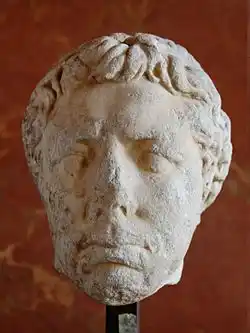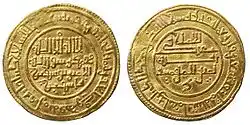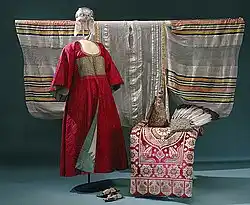Moroccan ethnicity concerns the ethnic makeup of the people of Morocco in the north-western corner of Africa. The country is fairly evenly divided between two ethnic groups, they being people of Arab descent who trace their roots to the Middle East broadly and the Arabian Peninsula specifically, and people of Berber descent, the broad ethnic group of people who have inhabited the Maghreb since ancient times. This ethnic situation is complicated by the interrelation of the two peoples since the Arab conquest of the region in the eighth century CE and there are also Moros who identify as both Arab and Berber, as well as Arabized Berbers whose ethnicity is primarily Berber, but who have adopted the cultural traits of the Arab population. These divisions are reflected in the political geography of the country. Arabs and Arab culture predominate in the cities and more urbanized regions of the north and west and the Berbers are the dominant ethnic group in the more inland, arid and mountainous east and south. For centuries there was a large community of Mizrahi Jews in Morocco, but with the advent of the state of Israel in the mid-twentieth century many of Morocco’s Jews have left the country.[1]
Research your ancestors on MyHeritage
Moroccan historyMoroccan history

Homo sapiens and other human ancestors lived in Morocco as long as 400,000 years ago. The region was more temperate in the aftermath of the last ice age and there was considerable settlement here in the Neolithic period, but it was really with the arrival of the Phoenicians here in the seventh and sixth centuries BCE that the region corresponding to modern-day Morocco became a part of the wider Mediterranean civilization. From the beginning, there were always two parts to Morocco, the urbanized and trading parts of the country along the coast, which were prone to settlement and colonization from outside, and the less densely populated inland regions, the latter of which have been a haven for the Berber people who have lived here since ancient times. The region exercised a fair degree of independence from Rome even after the conquest of Carthage in modern-day Tunisia during the second century BCE. Instead the Kingdom of Mauretania, corresponding to Morocco and much of northern Algeria today, enjoyed a period of political and cultural flourishing as a Roman client state in the first century BCE and first century CE, particularly under the rule of the scholar king, Juba II. However, not long after his death, the kingdom was formally incorporated into the Roman Empire as a province.[2]
Much of the region from Morocco east to Tunisia was conquered by the Alans in the early fifth century CE as the Western Roman Empire collapsed. The pivotal episode in Moroccan history then occurred in the final years of the seventh century and first years of the eighth, as the Arab conquests which had begun in Arabia in the 620s CE extended all the way across the Maghreb to Morocco. With this Islam and Muslim culture arrived to north-western Africa, along with a new Arab ruling class. This was the beginning of Morocco’s hybrid Arab-Berber culture.[3]
As with Spain, Morocco soon became effectively independent from the wider Arab Caliphate ruled from Baghdad. A series of largely native dynasties consequently ruled Morocco for centuries to come. An important one were the Almoravids in the eleventh and twelfth centuries. Under one of their leaders, Yusuf ibn Tashfin, the Muslims of Morocco provided extensive military and political aid to the Muslims of southern Spain, in the process slowing the speed of the Christian Reconquista of the country and ensuring that it would not be until the late fifteenth century that the Muslim powers were completely expelled from the Iberian Peninsula. With the conclusion of the re-conquest both Spain and Portugal took the crusade to North Africa and much of Morocco’s history between the sixteenth and nineteenth centuries focused on trying to protect itself from efforts to seize cities like Tangiers.

Morocco was one of the last countries in Africa to become a European colony during the Age of Imperialism of the nineteenth and early twentieth centuries. While Spain had coastal enclaves here throughout the period, in the end it was the French and Germans who became rivals to seize the prosperous ports and cities of the north and west. Following the Agadir gunboat crisis of 1911 France turned Morocco into a colony, one which lasted until the dissolution of the Treaty of Fez in 1956 and Morocco’s acquisition of independence. Today the country is run as a parliamentary constitutional monarchy and is a lower-middle income economy, one which has not benefited as much as it possibly could have from tourism and other potential avenues of economic development.
Moroccan cultureMoroccan culture

Moroccan culture reflects its mixed ethnic landscape, with a combination of Arabic and Berber influences, as well as Western European impacts, particularly from Spain, its near neighbor, and France, the former colonial power. The country is hugely influenced by the predominance of Islam, with 99% of the population being Muslim. As such mosques, Friday prayers and the Islamic religious calendar set the pace of life to a great extent, although religious life is more liberal here than in many other parts of the Maghreb and Middle East. The country’s food and art is a mixture of Arabic and Berber influences, with Arabic geometric art mixing with the pre-Islamic folk art of the Berber people. Dress is similarly hybrid, though traditional Muslim items of clothing such as the kaftan are as common here as elsewhere in North Africa. The folk music of Morocco is strongly influenced by its Berber heritage.[4] Café culture in cities like Tangiers, Marrakech and Casablanca is ubiquitous and one will often find five or six cafes on a single city block. This has been influenced by both Arab traditions and those of France as the colonial power here in the first half of the twentieth century.[5]
Moroccan languagesMoroccan languages
Morocco has a very diverse lingual landscape. There are two official languages, Arabic and Moroccan Berber. Over 90% of people speak Moroccan Arabic which emerged as the language of politics, religion and culture in the centuries following the Muslim conquest of the country at the very outset of the eighth century. However, its position on the edges of the Muslim world ensured that the Berbers here maintained a strong regional culture and the Berber languages survived in strength down to the present day. There are three main Berber or Amazigh dialects spoken today, Tarifit in the Rif region of the north-east, Central Atlas Tamazight in the Atlas Mountain region in the east and Tashelhit in the south. In total nearly a quarter of Moroccans speak one or other of these dialects.[6]
In addition to these official languages, the country’s proximity to Iberia and the regular traffic in tourists and trade across the Straits of Gibraltar has ensured that roughly 10% of Morocco’s 37 million people speak Spanish. There are an even greater number of French speakers, with over 60% of Moroccans being conversant to some extent in French. This is substantially owing to the country’s proximity to the wide mass of countries across north-west Africa which were colonized by the French in the nineteenth century and which have maintained cultural, economic and political ties to the European country. An estimated 15% of Moroccans speak English, however the percentage of English speakers has been expanding in recent decades owing to globalization.[7]
Explore more about ethnicity estimatesExplore more about ethnicity estimates
- MyHeritage DNA at MyHeritage
- Ethnicities around the world at MyHeritage
- What Is My Ethnicity? How MyHeritage Estimates Ethnicities at MyHeritage Knowledge Base
- Where's My Ethnicity?!: Why An Ethnicity Might Not Show Up In Your DNA (and How To Find Evidence Of It Anyway) at MyHeritage Knowledge Base
See alsoSee also
References
- ↑ https://www.moroccopedia.com/moroccan-people-and-culture/
- ↑ https://www.worldhistory.org/article/2129/exploring-roman-morocco/
- ↑ https://www.cambridge.org/core/books/abs/cambridge-history-of-africa/arab-conquest-and-the-rise-of-islam-in-north-africa/5408F1153F068360434FF17207D9E0D1
- ↑ https://www.worldatlas.com/articles/morocco-culture-customs-and-traditions.html
- ↑ https://www.washingtonpost.com/travel/2023/04/08/tangier-morocco-coffee-cafes/
- ↑ https://www.moroccoworldnews.com/2022/07/350542/moroccos-multilingual-amazigh-the-pursuit-of-languages-amid-fight-for-recognition
- ↑ https://www.cambridge.org/core/journals/english-today/article/abs/spread-of-english-in-morocco/D2270677337464378D0F8E3EF21A9A7F

